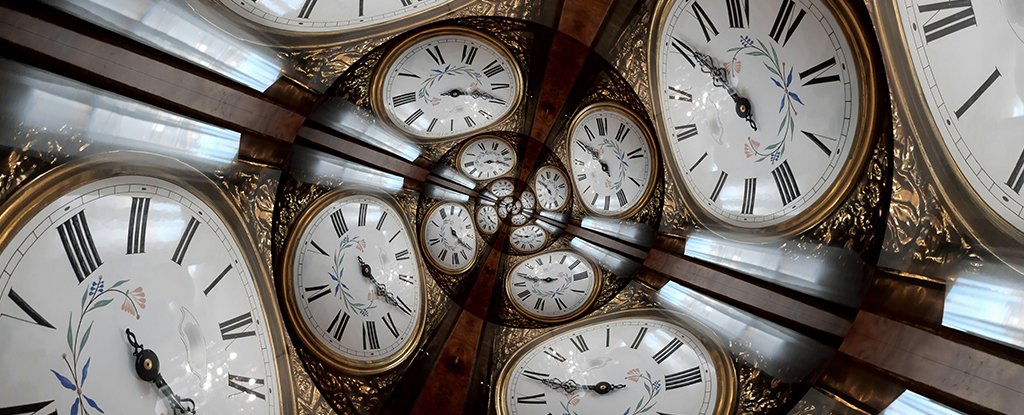
Nothing keeps time better than the beating heart of an atom. But even the sharp tap of a vibrating core is limited by uncertainties imposed by the laws of quantum mechanics.
Several years ago, researchers from MIT and the University of Belgrade in Serbia proposed that quantum entanglement could push clocks beyond this blurry line.
Now we have a proof of concept in the form of an experiment. Physicists have linked a cloud of ytterbium-171 atoms together with streams of photon reflected from a surrounding hall of mirrors and measured the timing of their tiny wobbles.
Their results show that entangling atoms in this way could speed up the time-measuring process of nuclear clocks, making them more accurate than ever. In principle, a clock based on this new approach would only lose 100 milliseconds since the dawn of time itself.
As with other advanced clocks based on the nuclei of atoms of cesium and thorium, time in this kind of arrangement is divided by oscillations in a ytterbium nucleus after it absorbs a specific energy of light.
Because the nucleus of ytterbium can hum 100,000 times faster than the nucleus of a cesium atom, it allows for a much more accurate time tracking mechanism.
But there comes a time when quantum physics says it is impossible to say exactly where an atom’s oscillations begin and stop. This Standard Quantum Limit (SQL) acts like a blur on the atomic pendulum; you may have a faster ticking clock, but what’s the use if you can’t even measure it?
Without some way to overcome this obstacle, it doesn’t really matter if we trade in a set of atomic nuclei for a more accurate type – their quantum clutter puts a hard limit on the precision of atomic clocks.
One trick is to capture the frequencies of several atoms, all buzzing at the same time, in a grid made up of hundreds of tiny atomic pendulums. Current atomic clock technologies use lasers that are designed to be as stable as possible and which provide each atom with an extremely similar light frequency. By combining their collective blurring, individual uncertainties are averaged.
This new method goes one step further in this averaging process. By connecting atoms in a way that intertwines the quantum probabilities of their spins, it is possible to redistribute the uncertainty in the system, increasing precision in some parts at the expense of others.
“It’s as if the light serves as a communication link between atoms,” says MIT physicist Chi Shu.
“The first atom that sees this light will change the light slightly, and that light also changes the second atom and the third atom, and through many cycles the atoms know each other collectively and begin to behave in the same way.”
Whichever method you use, the longer you listen, the more accurate the end result will be. In this case, the team found that entanglement made the measurement process about three times faster compared to clocks running on the SQL.
That may not seem like dramatic, but a speed boost may be just what we need to study some of the universe’s more subtle influences in time.
“Does the speed of light change as the Universe ages? Does the charge of the electron change?” says lead researcher Vladan Vuletic of MIT.
“That’s what you can research with more accurate atomic clocks.”
It could even allow us to find the point where general relativity breaks down, indicating new physics linking the defined curvature of space-time with the uncertain nature of quantum fields. Or let us measure the fine time-warping properties of dark matter more closely.
On the brink of a new era in physics and astronomy, we really need time on our side.
This research is published in Nature.